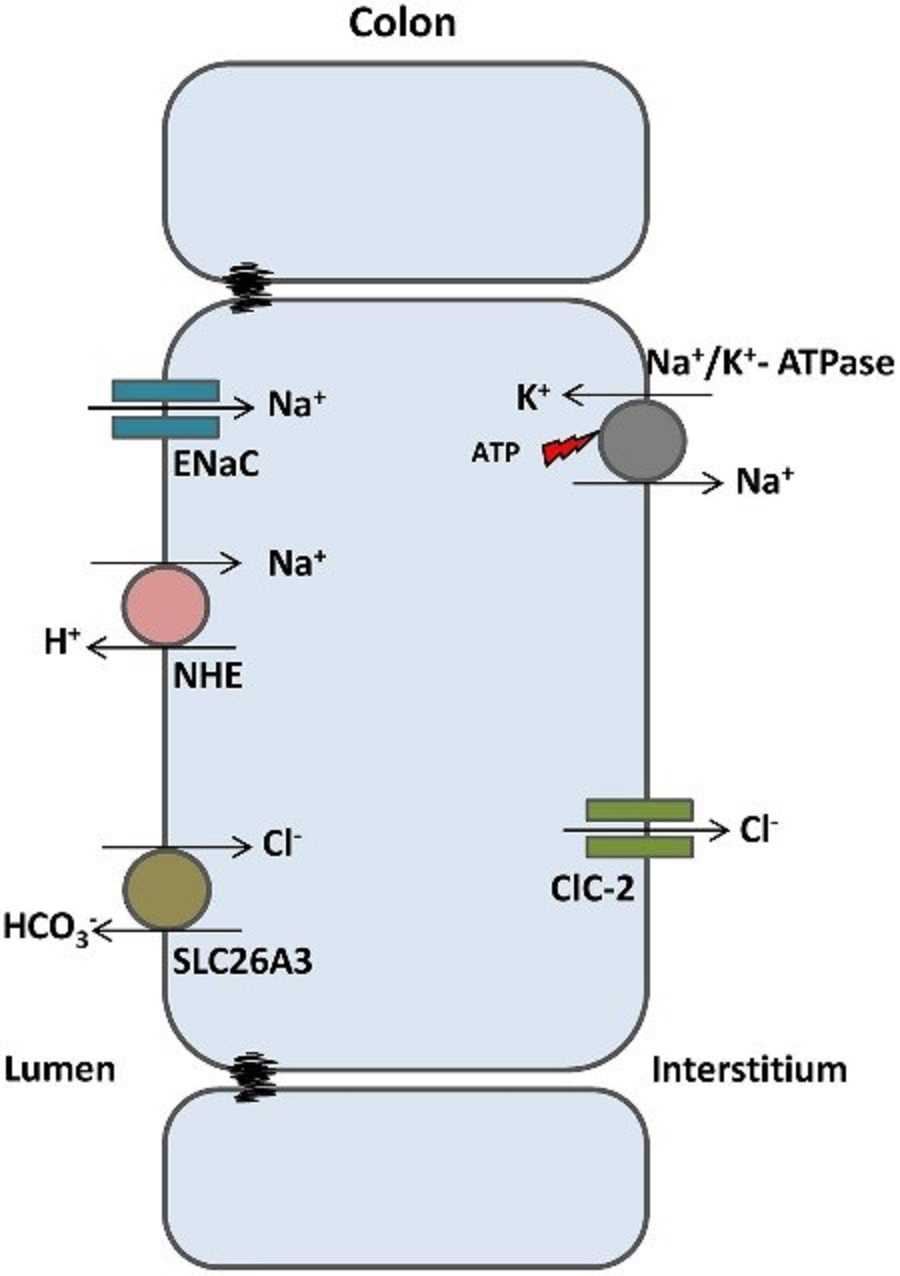Introduction of CLCN2
CLCN2 is one of the nine mammalian members of the ClC chloride channel family. It can be slowly activated by hyperpolarization and then be further activated by extracellular acidification or hypotonic cell swelling. CLCN2 is expressed in many tissues, such as the brain, intestine, kidney, stomach, salivary glands and heart. Although a clear understanding of its physiological function remains to be determined, a growing body of evidence suggests that CLCN2 can play different roles, depending on which tissue it is expressed in.
| Basic Information of CLCN2 | |
| Protein Name | Chloride channel protein 2 |
| Gene Name | CLCN2 |
| Aliases | ClC-2 |
| Organism | Homo sapiens (Human) |
| UniProt ID | P51788 |
| Transmembrane Times | 10 |
| Length (aa) | 898 |
| Sequence | MAAAAAEEGMEPRALQYEQTLMYGRYTQDLGAFAKEEAARIRLGGPEPWKGPPSSRAAPELLEYGRSRCARCRVCSVRCHKFLVSRVGEDWIFLVLLGLLMALVSWVMDYAIAACLQAQQWMSRGLNTSILLQYLAWVTYPVVLITFSAGFTQILAPQAVGSGIPEMKTILRGVVLKEYLTLKTFIAKVIGLTCALGSGMPLGKEGPFVHIASMCAALLSKFLSLFGGIYENESRNTEMLAAACAVGVGCCFAAPIGGVLFSIEVTSTFFAVRNYWRGFFAATFSAFIFRVLAVWNRDEETITALFKTRFRLDFPFDLQELPAFAVIGIASGFGGALFVYLNRKIVQVMRKQKTINRFLMRKRLLFPALVTLLISTLTFPPGFGQFMAGQLSQKETLVTLFDNRTWVRQGLVEELEPPSTSQAWNPPRANVFLTLVIFILMKFWMSALATTIPVPCGAFMPVFVIGAAFGRLVGESMAAWFPDGIHTDSSTYRIVPGGYAVVGAAALAGAVTHTVSTAVIVFELTGQIAHILPVMIAVILANAVAQSLQPSLYDSIIRIKKLPYLPELGWGRHQQYRVRVEDIMVRDVPHVALSCTFRDLRLALHRTKGRMLALVESPESMILLGSIERSQVVALLGAQLSPARRRQHMQERRATQTSPLSDQEGPPTPEASVCFQVNTEDSAFPAARGETHKPLKPALKRGPSVTRNLGESPTGSAESAGIALRSLFCGSPPPEAASEKLESCEKRKLKRVRISLASDADLEGEMSPEEILEWEEQQLDEPVNFSDCKIDPAPFQLVERTSLHKTHTIFSLLGVDHAYVTSIGRLIGIVTLKELRKAIEGSVTAQGVKVRPPLASFRDSATSSSDTETTEVHALWGPHSRHGLPREGSPSDSDDKCQ |
Function of CLCN2 Membrane Protein
ClCN2 takes part in many important biological processes. Recent researches have shown us that disordered function of the ClCN2-encoding gene in the mouse will directly lead to degeneration of male germ cells and photoreceptors, which may be a result of a defect in transepithelial transport across Sertoli cells and the retinal pigment epithelium. It also participates in fluid secretion in the murine small intestine or in fluid absorption in the colon. The results got from hippocampus cells or transfected dorsal root ganglion neurons suggest that ClCN2 has been implicated in the regulating of the effects of GABAA receptor action by controlling intracellular chloride concentration. In humans, mutations in the gene ClCN2, which can be predicted to cause hyperexcitability of GABAergic synapses, have recently been found to be associated with idiopathic generalized epilepsies.
 Fig 1. ClC-2 aids in water absorption in intestinal epithelia. (Poroca, 2017)
Fig 1. ClC-2 aids in water absorption in intestinal epithelia. (Poroca, 2017)
Application of CLCN2 Membrane Protein in Literature
The article identifies three different heterozygous mutations in the chloride-channel gene CLCN2 in three unrelated families with IGE. These mutations can bring about (i) a premature stop codon (M200fsX231), (ii) an atypical splicing (del74-117) and (iii) a single amino-acid substitution (G715E). All mutations produce functional alterations which are responsible for their pathogenic phenotypes.
This article shows that two missense mutations in SCN1A are detected in two GEFS+ probands which confirms the importance of this channel for this epilepsy. What’s more, a previously unreported CLCN2 mutation is found in a proband showing CAE. The authors conclude that even in the highly heterogeneous cohort, the complexity of the epileptic condition is outstanding, while mutations in the analyzed candidate region of ion channel genes appear to explain only a minority of cases.
The article analyzes the CLCN2 chloride channel gene in 112 probands with familial epilepsy, detecting 18 common polymorphisms. The results show us that CLCN2 mutations may be a rare cause of familial epilepsy and further studies are needed to test if polymorphisms in this gene are associated with epilepsy.
This article shows that association between Hsp90 and ClC-2 results in greater channel activity by increasing cell surface channel expression, facilitation of channel opening, and enhanced channel sensitivity to intracellular [Cl−]. This association may also bring important pathophysiological consequences, which means that it can increase ClC-2 activity in response to cellular stresses such as elevated temperature, ischemia, or oxidative reagents.
This article suggests that there may not be a significant relationship between the severity of lung disease and SNPs in the CLC-2 gene, and CLC-2 is not a key modifier gene of CF lung phenotype. Further studies evaluating other phenotypes associated with CF may be useful in the future to assess the ability of CLC-2 to modify CF disease severity.
CLCN2 Preparation Options
Membrane protein studies have got great progress over the past few years. Based on our versatile Magic™ membrane protein production platform, we could offer a series of membrane protein preparation services in reconstitution forms as well as multiple active formats for worldwide customers. Aided by our versatile Magic™ anti-membrane protein antibody discovery platform, we also provide customized anti-CLCN2 antibody development services.
During the past years, Creative Biolabs has successfully generated many functional membrane proteins for our global customers. It's our pleasure to boost the development of our clients’ programs with our one-stop, custom-oriented service. For more detailed information, please feel free to contact us.
Reference
All listed services and products are For Research Use Only. Do Not use in any diagnostic or therapeutic applications.